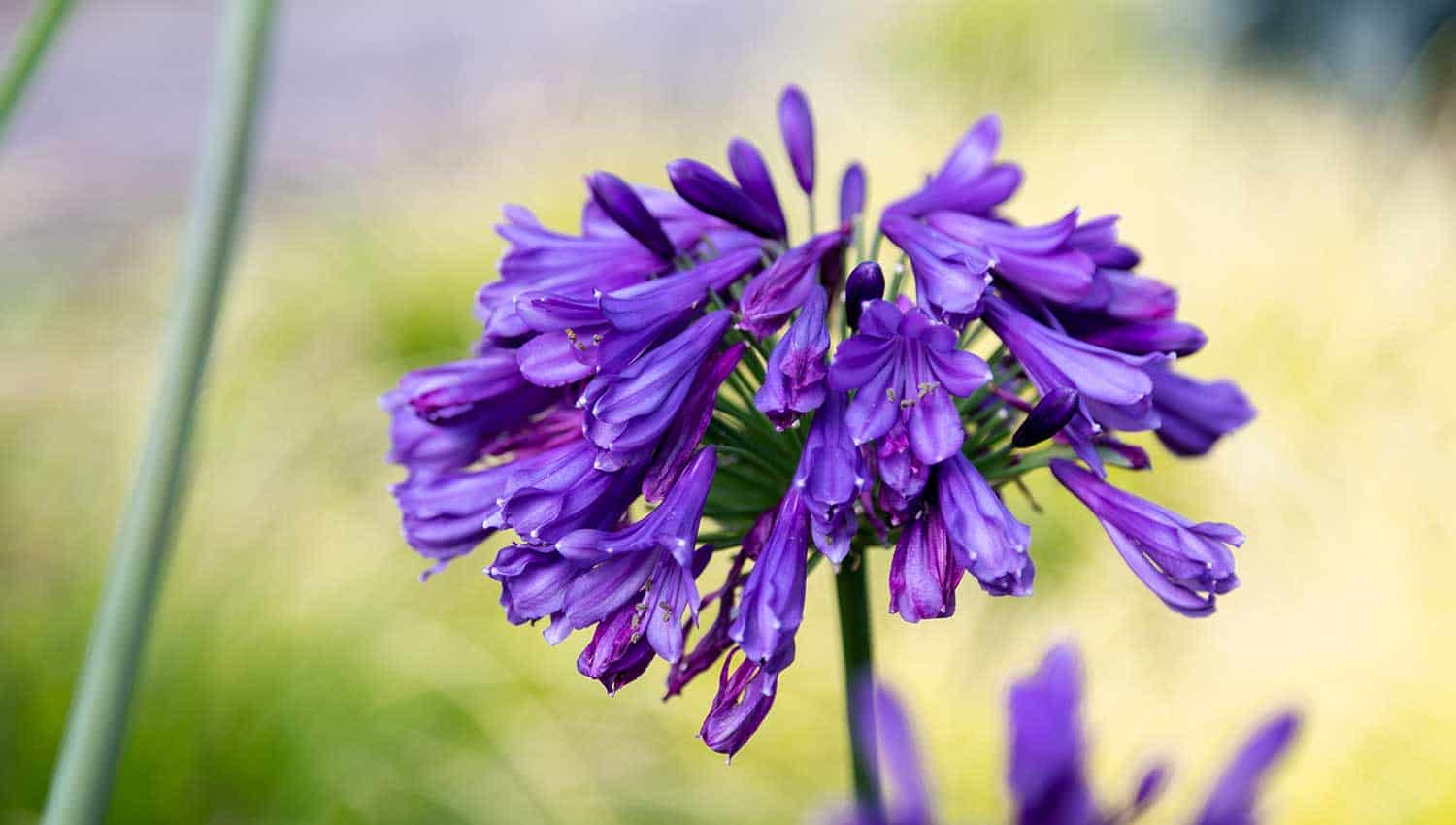Agapanthus Treatment Tips for Lush and Vibrant Flowers
Agapanthus Treatment Tips for Lush and Vibrant Flowers
Blog Article
Mastering the Art of Agapanthus Care: Important Steps for Healthy Development and Vibrant Flowers
In the world of gardening, the cultivation of agapanthus stands as a satisfying venture for those that look for to support these elegant flowering plants. With their striking flowers and graceful vegetation, agapanthus has actually captured the attention of garden enthusiasts worldwide. Nonetheless, achieving ideal growth and lively blooms requires a nuanced approach that encompasses different essential steps. From picking the best selection to understanding trimming methods, the journey in the direction of growing growing agapanthus plants is complex and holds the key to opening the full capacity of these agricultural gems.

Choosing the Right Agapanthus Variety

When selecting the best Agapanthus range for your garden, consider aspects such as environment suitability, flower color, and development routine. Agapanthus, commonly referred to as Lily of the Nile or African lily, comes in a variety of colors varying from tones of blue and purple to white. Select a bloom color that complements your existing yard combination to create an unified landscape. Additionally, consider the climate in your region to guarantee the Agapanthus range you choose can flourish in your certain conditions. Some ranges are much more tolerant of cool temperatures, while others prefer warmer environments. Understanding the development routine of different Agapanthus ranges is crucial for proper placement within your garden. Some selections have a clumping development practice, ideal for containers or boundaries, while others have an even more spreading nature, ideal for ground cover or mass plantings. By carefully reviewing these elements, you can select the excellent Agapanthus range to improve the charm of your yard.
Ideal Planting Problems
Taking into consideration the optimal ecological requirements is necessary for successful Agapanthus growing. Agapanthus plants are delicate to chilly temperatures and need to be protected from frost throughout winter months.
To ensure healthy and balanced growth and lively flowers, plant Agapanthus light bulbs at a deepness of about 2-4 inches and room them 8-12 inches apart. Mulching around the base of the plants helps maintain dampness and reduces weed growth.
Watering and Feeding Tips
Preserving correct dampness degrees and offering crucial nutrients are vital aspects in the treatment routine for Agapanthus plants. When it comes to watering Agapanthus, it is vital to strike an equilibrium. These plants favor continually damp dirt but are vulnerable to root rot if overwatered.
Feeding Agapanthus is crucial for advertising healthy growth and respected blossoms. Use a well balanced plant food, such as a 10-10-10 formula, in the very early springtime as new growth arises. By following these watering and feeding pointers, you can guarantee your Agapanthus plants prosper and generate vibrant, resilient blooms.
Trimming Strategies for Agapanthus
Pruning Agapanthus plants at the appropriate times and with appropriate strategies is critical for maintaining their health and advertising ideal growth and flowering. The optimal time to prune Agapanthus is in late winter months or very early spring before brand-new development emerges.
Deadheading spent blossoms can also redirect the plant's power right into producing even more flowers rather than setting seeds. If you want to gather seeds for propagation, leave some blossoms to completely dry and mature on the plant.
Keep in mind to utilize pop over to this web-site tidy, sharp tools to make specific cuts and reduce the danger of presenting diseases. Agapanthus. Normal trimming will assist keep your Agapanthus looking cool and healthy and balanced while guaranteeing a bountiful screen of stunning blossoms
Managing Common Bugs and Conditions
After making sure proper trimming strategies for Agapanthus, it is vital to deal with usual pests and diseases that can influence the health and wellness and vitality of these plants. Agapanthus plants are generally hardy but can still drop target to particular concerns. One common parasite that impacts Agapanthus is the Agapanthus gall midget. This small, orange fly lays its eggs in the foliage, bring about distorted development and web link flower buds that fall short to open. To combat this insect, prune and destroy any type of affected visit this page plant parts and consider making use of insecticidal soap.
Additionally, Agapanthus plants can suffer from root rot if they are grown in inadequately draining pipes dirt. By being cautious and taking punctual action versus pests and diseases, you can help your Agapanthus plants thrive and create lively blooms. Agapanthus.

Conclusion
To conclude, grasping the art of agapanthus care entails picking the ideal variety, giving perfect growing conditions, correct watering and feeding, ideal pruning strategies, and attending to common insects and conditions. By following these vital steps, you can ensure healthy growth and vibrant blooms for your agapanthus plants. Remember to on a regular basis keep an eye on and preserve your plants to promote their overall health and long life.
To guarantee healthy growth and vivid flowers, plant Agapanthus bulbs at a deepness of regarding 2-4 inches and space them 8-12 inches apart. By following these watering and feeding ideas, you can ensure your Agapanthus plants flourish and generate vivid, resilient blooms.
One usual pest that impacts Agapanthus is the Agapanthus gall midget. Additionally, Agapanthus plants can endure from root rot if they are planted in badly draining dirt. By adhering to these necessary steps, you can make sure healthy development and vibrant blooms for your agapanthus plants.
Report this page